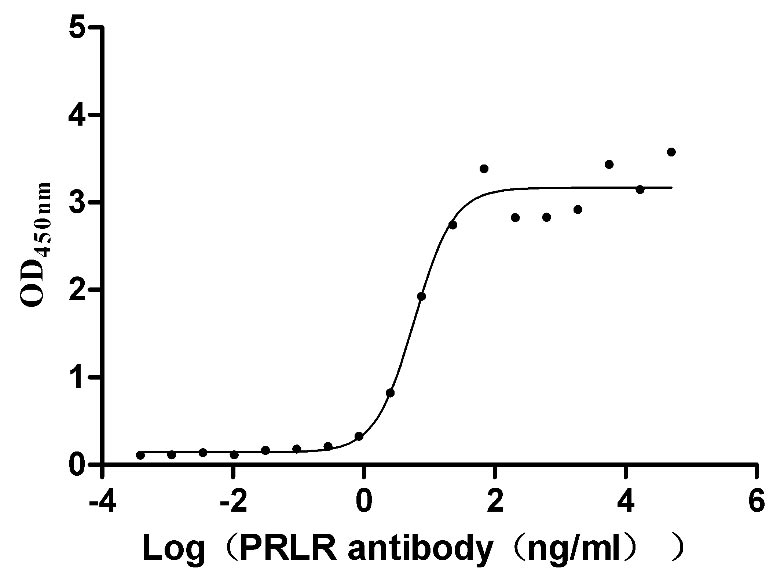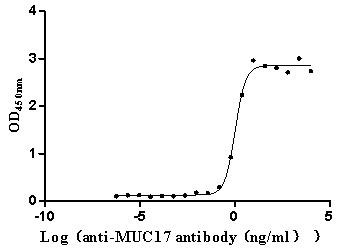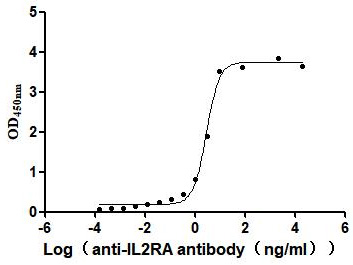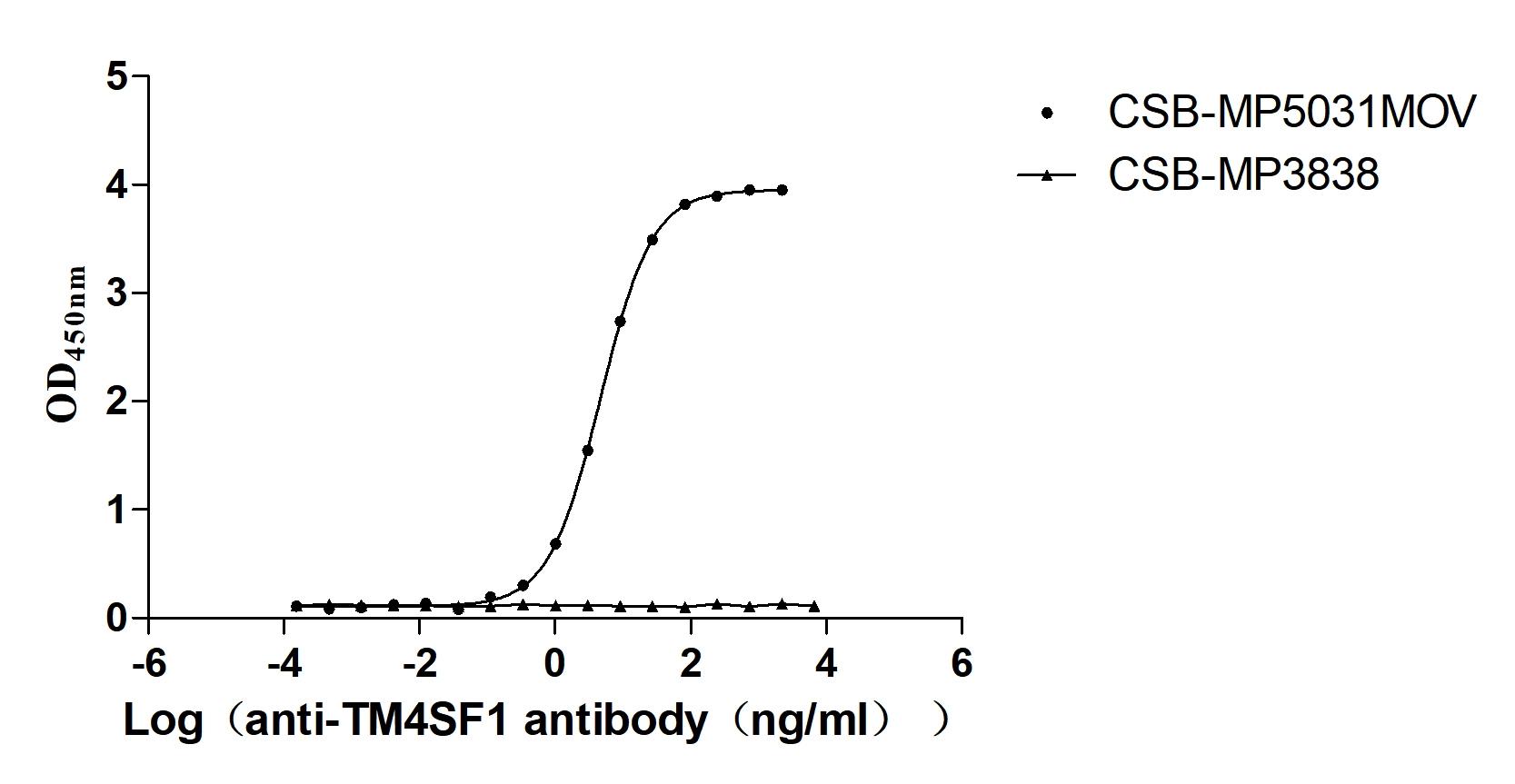Recombinant Schizosaccharomyces pombe Phosphatidylinositol 3-kinase tor2 (tor2), partial
-
中文名稱:龐貝裂殖酵母tor2重組蛋白
-
貨號(hào):CSB-YP896774SXV
-
規(guī)格:
-
來源:Yeast
-
其他:
-
中文名稱:龐貝裂殖酵母tor2重組蛋白
-
貨號(hào):CSB-EP896774SXV
-
規(guī)格:
-
來源:E.coli
-
其他:
-
中文名稱:龐貝裂殖酵母tor2重組蛋白
-
貨號(hào):CSB-EP896774SXV-B
-
規(guī)格:
-
來源:E.coli
-
共軛:Avi-tag Biotinylated
E. coli biotin ligase (BirA) is highly specific in covalently attaching biotin to the 15 amino acid AviTag peptide. This recombinant protein was biotinylated in vivo by AviTag-BirA technology, which method is BriA catalyzes amide linkage between the biotin and the specific lysine of the AviTag.
-
其他:
-
中文名稱:龐貝裂殖酵母tor2重組蛋白
-
貨號(hào):CSB-BP896774SXV
-
規(guī)格:
-
來源:Baculovirus
-
其他:
-
中文名稱:龐貝裂殖酵母tor2重組蛋白
-
貨號(hào):CSB-MP896774SXV
-
規(guī)格:
-
來源:Mammalian cell
-
其他:
產(chǎn)品詳情
-
純度:>85% (SDS-PAGE)
-
基因名:tor2
-
Uniprot No.:
-
別名:tor2; SPBC216.07c; SPBC646.01c; Serine/threonine-protein kinase tor2; EC 2.7.11.1; Phosphatidylinositol kinase homolog tor2; Target of rapamycin kinase 2
-
種屬:Schizosaccharomyces pombe (strain 972 / ATCC 24843) (Fission yeast)
-
蛋白長(zhǎng)度:Partial
-
蛋白標(biāo)簽:Tag?type?will?be?determined?during?the?manufacturing?process.
The tag type will be determined during production process. If you have specified tag type, please tell us and we will develop the specified tag preferentially. -
產(chǎn)品提供形式:Lyophilized powder
Note: We will preferentially ship the format that we have in stock, however, if you have any special requirement for the format, please remark your requirement when placing the order, we will prepare according to your demand. -
復(fù)溶:We recommend that this vial be briefly centrifuged prior to opening to bring the contents to the bottom. Please reconstitute protein in deionized sterile water to a concentration of 0.1-1.0 mg/mL.We recommend to add 5-50% of glycerol (final concentration) and aliquot for long-term storage at -20℃/-80℃. Our default final concentration of glycerol is 50%. Customers could use it as reference.
-
儲(chǔ)存條件:Store at -20°C/-80°C upon receipt, aliquoting is necessary for mutiple use. Avoid repeated freeze-thaw cycles.
-
保質(zhì)期:The shelf life is related to many factors, storage state, buffer ingredients, storage temperature and the stability of the protein itself.
Generally, the shelf life of liquid form is 6 months at -20°C/-80°C. The shelf life of lyophilized form is 12 months at -20°C/-80°C. -
貨期:Delivery time may differ from different purchasing way or location, please kindly consult your local distributors for specific delivery time.Note: All of our proteins are default shipped with normal blue ice packs, if you request to ship with dry ice, please communicate with us in advance and extra fees will be charged.
-
注意事項(xiàng):Repeated freezing and thawing is not recommended. Store working aliquots at 4°C for up to one week.
-
Datasheet :Please contact us to get it.
靶點(diǎn)詳情
-
功能:Phosphatidylinositol 3-kinase homolog, component of TORC1, which regulates multiple cellular processes to control cell growth in response to environmental signals. TORC1 controls the switch between cell proliferation and differentiation by sensing nutrient availability. Nutrient limitation and environmental stress signals cause inactivation of TORC1. Active TORC1 positively controls cell growth and ribosome biogenesis by regulating ribosomal protein gene expression. In nutrient rich conditions, responsible for the phosphorylation of AGC S6 kinase (S6K) psk1 at 'Thr-392' and 'Thr-415', activating psk1 kinase activity and promoting phosphorylation of ribosomal protein S6. Also catalyzes the nutrient-dependent phosphorylation of sck1 and sck2. TORC1 negatively controls G1 cell-cycle arrest, sexual development and amino acid uptake. Represses mating, meiosis and sporulation efficiency by interfering with the functions of the transcription factor ste11 and the meiosis-promoting RNA-binding protein mei2.
-
基因功能參考文獻(xiàn):
- These results suggest that nitrogen depletion decreases Tor2 activity through Tsc2, thereby promoting the surface expression of Agp3 from trans-Golgi/endosomes. PMID: 26447710
- Rapamycin inactivates Tor2 activity in the presence of caffeine. PMID: 22762302
- Rapamycin inhibits the ability of TORC1 to phosphorylate Rps6, owing to interaction of the rapamycin-FKBP12 complex with the FRB domain in Tor2 PMID: 20144990
- Studies postulate that the signaling cascade may branch below Rhb1 or Tor2 and regulate the amino acid uptake and response to nitrogen starvation independently. PMID: 19620394
- Target of rapamycin complex 2 (TORC2) is not essential for cell viability in S. pombe but plays important roles in cellular survival of stress conditions through phosphorylation and activation of an AGC-family protein kinase, Gad8. PMID: 18235227
顯示更多
收起更多
-
亞細(xì)胞定位:Cytoplasm.
-
蛋白家族:PI3/PI4-kinase family
-
數(shù)據(jù)庫(kù)鏈接:
KEGG: spo:SPBC216.07c
STRING: 4896.SPBC216.07c.1
Most popular with customers
-
Recombinant Human Tumor necrosis factor ligand superfamily member 18 (TNFSF18), partial (Active)
Express system: Mammalian cell
Species: Homo sapiens (Human)
-
Recombinant Mouse Prolactin receptor (Prlr), partial (Active)
Express system: Mammalian cell
Species: Mus musculus (Mouse)
-
Recombinant Human Mucin-17 (MUC17), partial (Active)
Express system: Mammalian cell
Species: Homo sapiens (Human)
-
Recombinant Human Interleukin-2 receptor subunit alpha (IL2RA), partial (Active)
Express system: Mammalian cell
Species: Homo sapiens (Human)
-
Recombinant Human Killer cell immunoglobulin-like receptor 3DL2 (KIR3DL2), partial (Active)
Express system: Mammalian cell
Species: Homo sapiens (Human)
-
Recombinant Macaca fascicularis Transmembrane 4 L6 family member 1 (TM4SF1)-VLPs (Active)
Express system: Mammalian cell
Species: Macaca fascicularis (Crab-eating macaque) (Cynomolgus monkey)
-
Recombinant Macaca fascicularis Gastric inhibitory polypeptide receptor (GIPR), partial (Active)
Express system: yeast
Species: Macaca fascicularis (Crab-eating macaque) (Cynomolgus monkey)
-
Recombinant Human Cadherin-1(CDH1),partial (Active)
Express system: Mammalian cell
Species: Homo sapiens (Human)



















